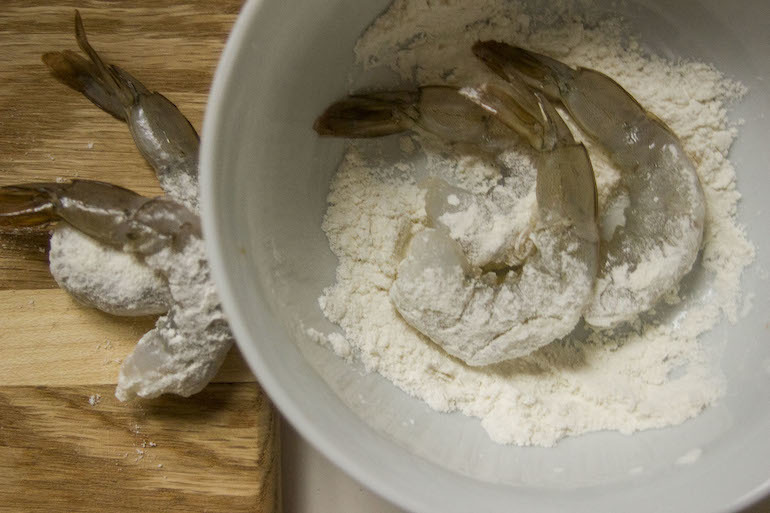When I’m home, I never fail to learn that I’ve been doing something wrong at school. This time, I learned that I’ve been neglecting to read the ingredient labels on my frozen shrimp bags.

Frozen shrimp is a staple in my apartment. There’s always a bag in the freezer for quick and easy dinners like grilled shrimp over rice, shrimp scampi, shrimp Alfredo or garlic butter shrimp. Until recently, I didn’t think to put any thought into which bag to grab from the freezer aisle. That was until I learned about STPP, a food additive that my parents say caused them to experience symptoms of “crazy legs,” aka Restless Legs Syndrome (RLS), after using frozen shrimp for a seafood dinner gone wrong.

What is STPP?
Sodium tripolyphosphate, also known as pentasodium triphosphate or STPP, is a versatile chemical, used in cleaning products, detergents, soaps, paints, ceramics and food products. According to Wise Geek, it is often used as a preservative in seafood like shrimp and scallops to “help retain…tenderness and moisture during storage and transport.” STPP can also improve the physical appearance of seafood and retain water to increase the weight, and therefore cost, of the product.

Don’t be fooled by unverified or irrelevant claims.
While I could not find a direct connection or relationship between the parents’ symptoms and the STPP in the frozen shrimp they consumed, I did find some interesting facts about the chemical in my research. I was surprised and shocked by some of the information I read from some sources, but after trying to find credible evidence of the claims, I was unsuccessful.
Many of the claims were likely based on much larger amounts of STPP than are actually present in food products. For example, in large amounts, STPP is known to cause skin, eye and respiratory irritation. Notably, it is not known to be carcinogenic in any amount.

Credible sources say STPP is safe at certain levels.
The information I present here is what I have found from multiple sources. STPP is characterized by the FDA as GRAS (Generally Regarded as Safe), meaning it has been deemed safe for consumption either by scientific experimentation or, if prior to 1958, by consumer experience. It is labeled by the FDA as both a multiple purpose GRAS food substance and a sequestrant, which means it stabilizes and improves the quality of food products.
The FDA regards STPP as safe when it is used according to GMP (Good Manufacturing Practice) and is only used in amounts reasonably necessary for its effects on consumed products. These amounts vary from 2% to 10% depending on the source of information. Therefore, the FDA maintains that the use of STPP as a food preservative is safe.

Which shrimp should you buy?
If you could purchase shrimp without the additive, would you? If you want to avoid additives and prioritize freshness, buy frozen shrimp with the only word on the ingredients list being “shrimp.” At many supermarkets, the “fresh” shrimp at the counter are likely to have been previously frozen anyway.

Additionally, look for independent agency certifications for both wild (Wild American Shrimp) and farmed (Aquaculture Stewardship Council) shrimp, which show that the production has been regulated. Still, it is likely more sustainable to purchase wild-caught, North American shrimp, as farmed, imported shrimp are often fed antibiotics (check out this testing conducted by Consumer Reports).

I hope you use this information to become more mindful of what you consume, yet also wary of the credibility of the information you read.


